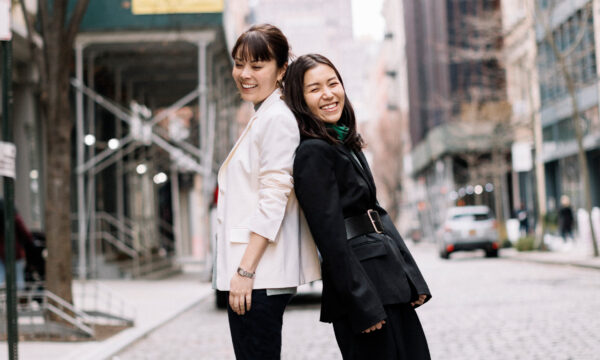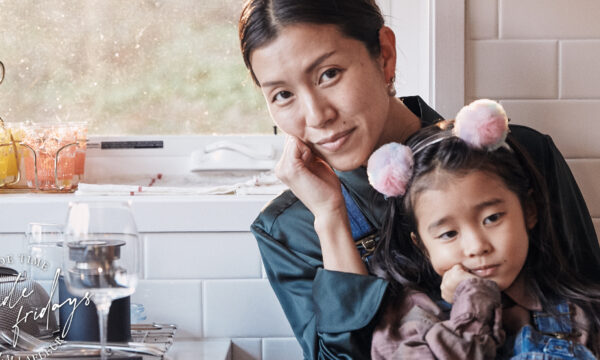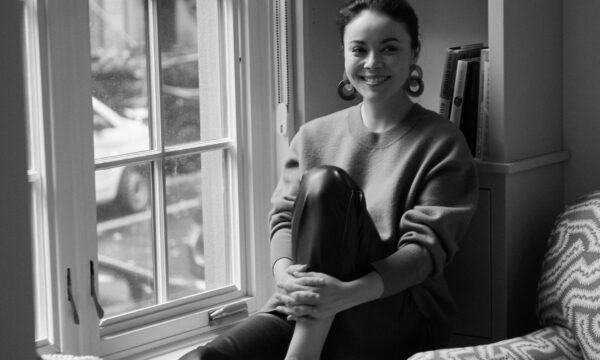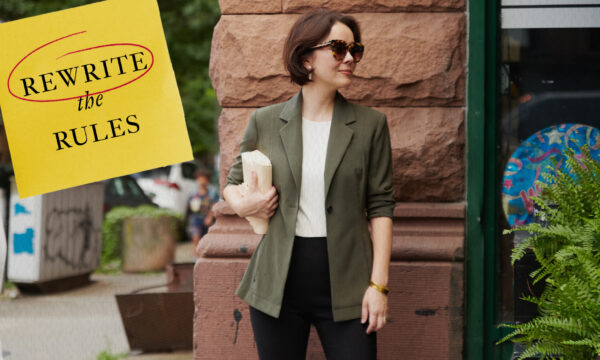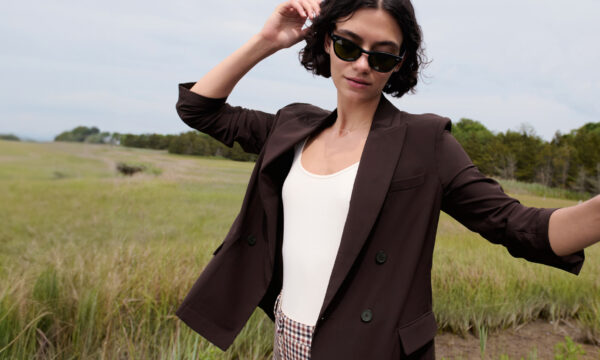
Our design team reviewing Miyako’s sketches.
What Our Design Process Is Really Like
What sets M.M. pieces apart, according to our co-founder & Chief Creative Officer, Miyako Nakamura, and our Director of Merchandising, Shelby Goldfaden.
If you’ve ever worn an M.M. piece, you know that we give equal weight to form and function. You’ve felt the stretchy embrace of a perfectly draped jardigan. You’ve seen a sleek OrigamiTech suit magically emerge from your suitcase, wrinkle-free. You’ve spilled on a sumptuous silk skirt—and tossed it in the laundry afterward.
Of course, we strike this balance of polish and practicality to help you get dressed with the utmost ease—a philosophy largely inspired by our founders’ Japanese heritage. But how do we do it? Our secret sauce is a deeply collaborative effort between the creative and the analytical, between right-brain and left-brain thinking, between artistic inspiration and data-driven feedback.
To paint a picture of what this looks like in action, I turned to two team members who live and breathe these complementary halves of M.M. in their day-to-day: our co-founder & Chief Creative Officer, Miyako Nakamura (a.k.a. our creative genius), and our Director of Merchandising, Shelby Goldfaden (a.k.a. our customer whisperer). Below, they speak to what makes the craft of M.M. garments so special.
Want more M Dash?
Sign up for our weekly newsletter.
Thank you!
Miyako: “I don’t have a specific routine to gather inspiration, but I make an effort to go see art exhibitions or performances on a fairly regular basis as a way to stay creatively stimulated. I don’t necessarily intend certain things to work as an inspiration, but things often end up sticking in my mind. This also happens naturally and spontaneously in my daily life. I could be taking a walk or having a conversation, and suddenly, I have a spark of inspiration. It’s a constant exercise in mindfulness, really.”
Shelby: “I’m constantly looking at what’s happening at other brands and on the runway. I also like to walk the floor of different stores and see what seems to be resonating with customers. It may seem counterintuitive, but I even visit stores of brands that are extremely different than we are so I never lose that holistic viewpoint. I want to know what resonates with all types of people.
Another important thing I’ve learned from Miyako is that I need to get ‘out of my phone.’ It’s so easy to scroll through things like Instagram for inspiration, but that becomes uninspiring quite quickly. I really want us to push against that habit so that we continue to stay true to developing our unique perspective.”
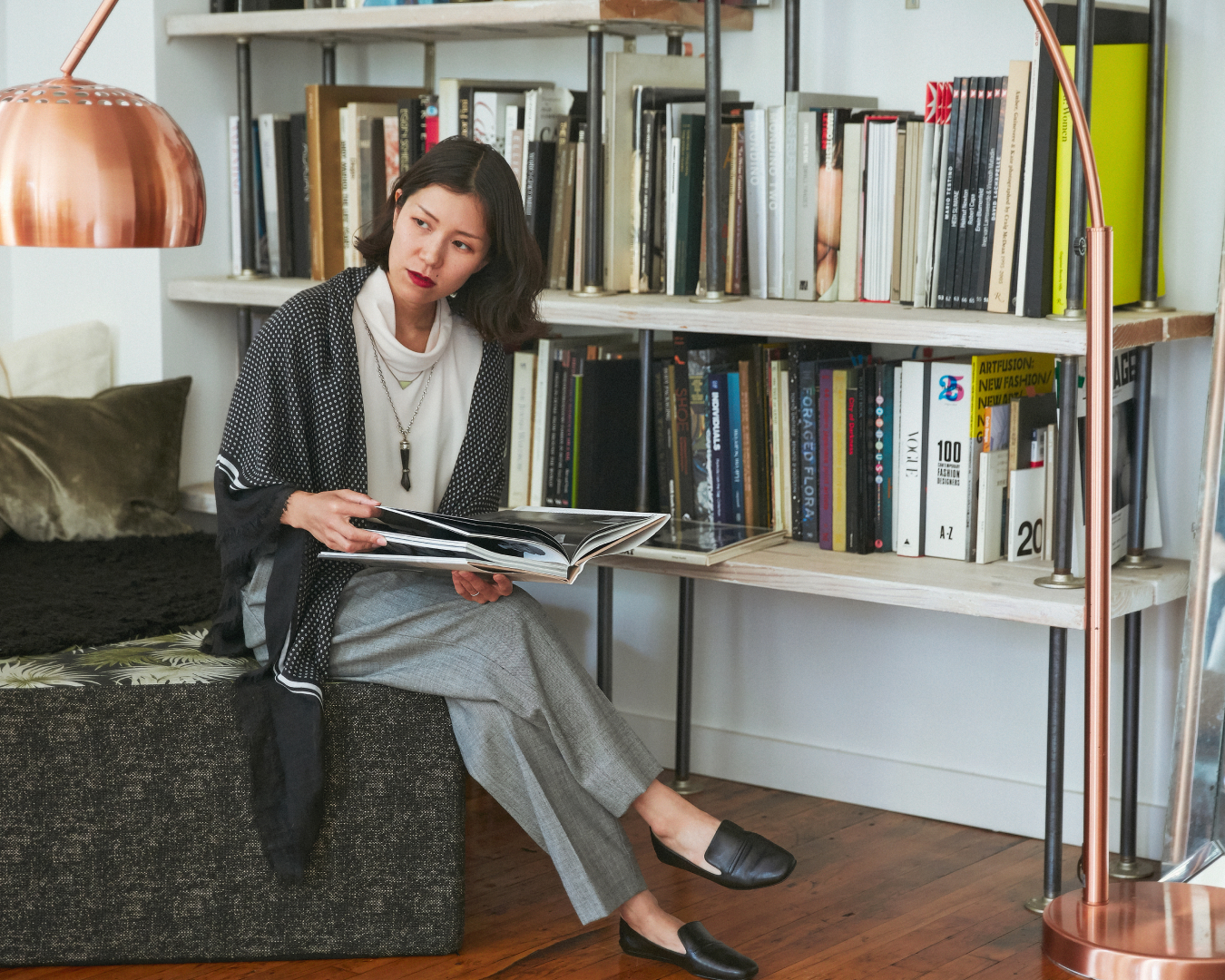
Miyako exploring photo inspiration.
“Within this sea of inspiration that I’ve accumulated, there always ends up being a common thread or feeling that I can connect to and use as inspiration for the collection concept.”
Miyako: “I tend to conceptualize things based on the season. We have a calendar that starts over a year ahead of when the pieces will launch, so I’m designing way ahead of time. To keep myself grounded during the conceptualization process, I keep a list of thoughts as well as a photo album where I’ve captured images that reflect objects or moments of inspiration that I’ve encountered. After reminding myself of these impactful moments, I do research. For instance, when I come across a photographer who inspires me, I’ll read up on them.
Within this sea of inspiration that I’ve accumulated, there always ends up being a common thread or feeling that I can connect to and use as inspiration for the collection concept. Once I’ve identified that, I trim down my collection of inspirational imagery so it reflects this focused theme that I’ve found, and I print out my favorite images. That’s usually the start of my mood board, which is an incredibly important part of my process. My mood boards are mostly comprised of clothing-specific things, objects, pieces of art, and imagery that captures ‘moments’ that I find remarkably beautiful, fresh, or inventive.
From there, I start to daydream about actual aspects of designs—the lines, volume, dimensions, or fabrication of a garment—and put my pencil to paper. Once I have concrete direction, I put my ideas into a presentation that tells the story of the season, and I pass it off to the rest of the team. From here on out, the process is incredibly collaborative. The design and production teams work together to determine which fabrics to use—according to our priorities when it comes to aesthetic, quality, functionality, and sustainability—and make edits to my initial concepts.”
Shelby: “Once Miyako passes her mood board and designs off to my team, there’s a lot of digesting. I’ll have questions like, ‘Am I understanding this sketch right?’ Sometimes, something will be a totally new, more forward idea and it’s like, ‘Okay, we’ll do this, but we’ll make a very low amount to test it out.’ Other times, we immediately go, ‘Oh my God, this is incredible! Customers are going to love this.’
It’s a lot of putting the puzzle together and shuffling things around at that point. We might have feedback about how Miyako paired up certain styles with certain fabrics. It’s a very iterative, collaborative process. We love dreaming up pretty things, but we have to balance the business and the beautiful. We have to deliver what customers want while also staying true to our unique point of view.”
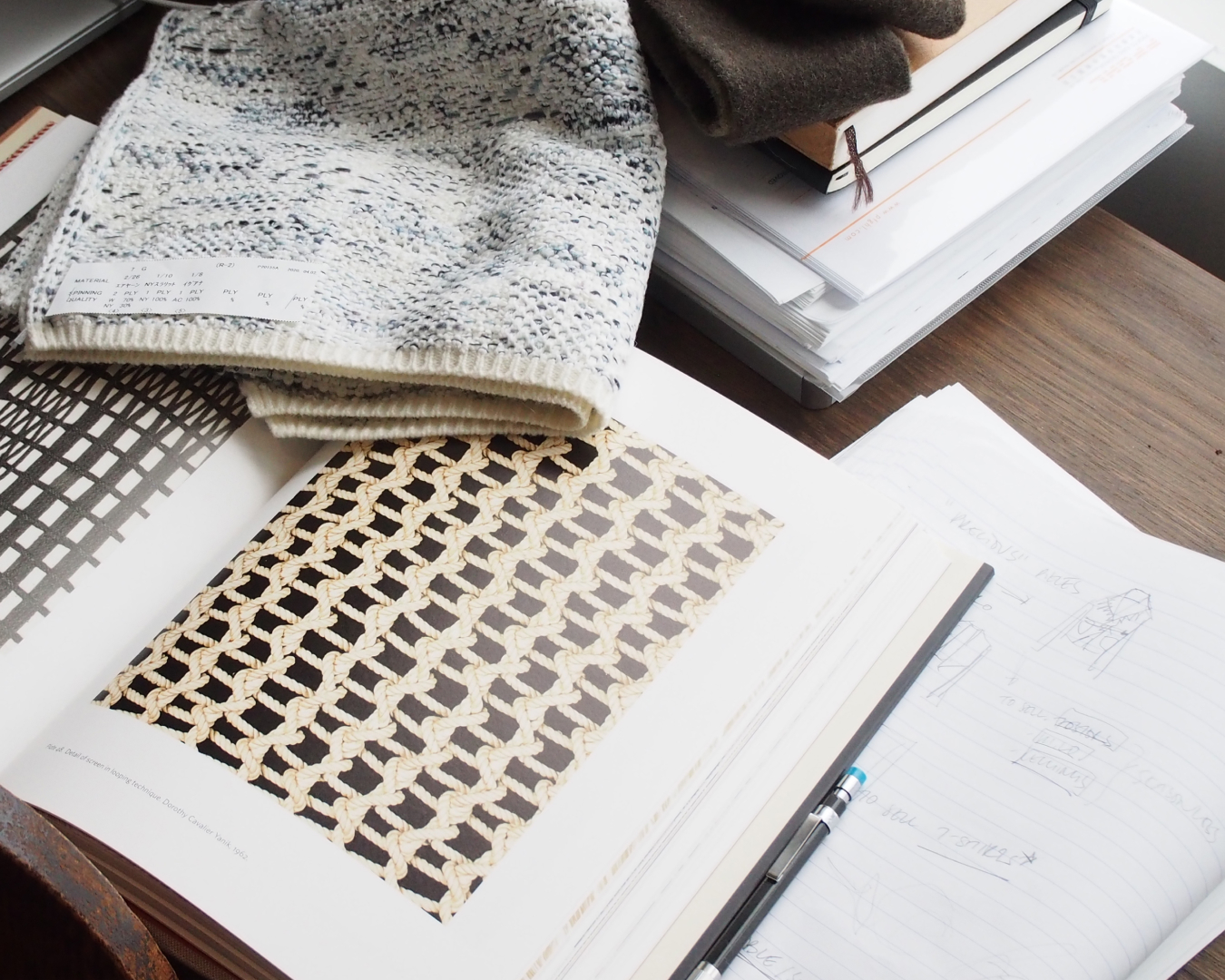
Miyako’s desk, featuring pattern inspiration, fabric swatches, and a few of her M.M. design sketches.
“We incorporate customer feedback all the time. In a fitting, we might be considering a style that’s voluminous with no waist, and I’ll make us revise it, because so many customers tell us that they want to show their waists.”
Shelby: “I’ll start on this question, since I’m effectively the design team’s frontline when it comes to customer feedback. I have a running list of feedback from various sources: stylists, our customer Slack community, and comments I’ve heard during a visit to one of our store locations. I also ask our stylists (or customers themselves) why customers are requesting certain things, be that a specific color, a revised silhouette, or a functional feature. I really want to understand what they want and how it will complement their life. If I feel like I need more feedback, I’ll approach customers via Slack or look at our product reviews.
We truly incorporate customer feedback all the time. In a fitting, we might be considering a style that’s voluminous with no waist, and I’ll make us revise it, because so many customers tell us that they want to show their waists. They tell us this not only verbally but also with their purchases, so we’re listening to and incorporating customer feedback all the time. But again, Miyako has really taught me that there’s a fine line here. We can’t have feedback do the designing, because then we will lose our unique perspective.”
Miyako: “I do believe that the best things are born out of trying things that are outside of your comfort zone. So yeah, it’s a balance of encouraging our customer to discover a different side of herself while also empowering her to stay true to herself.”
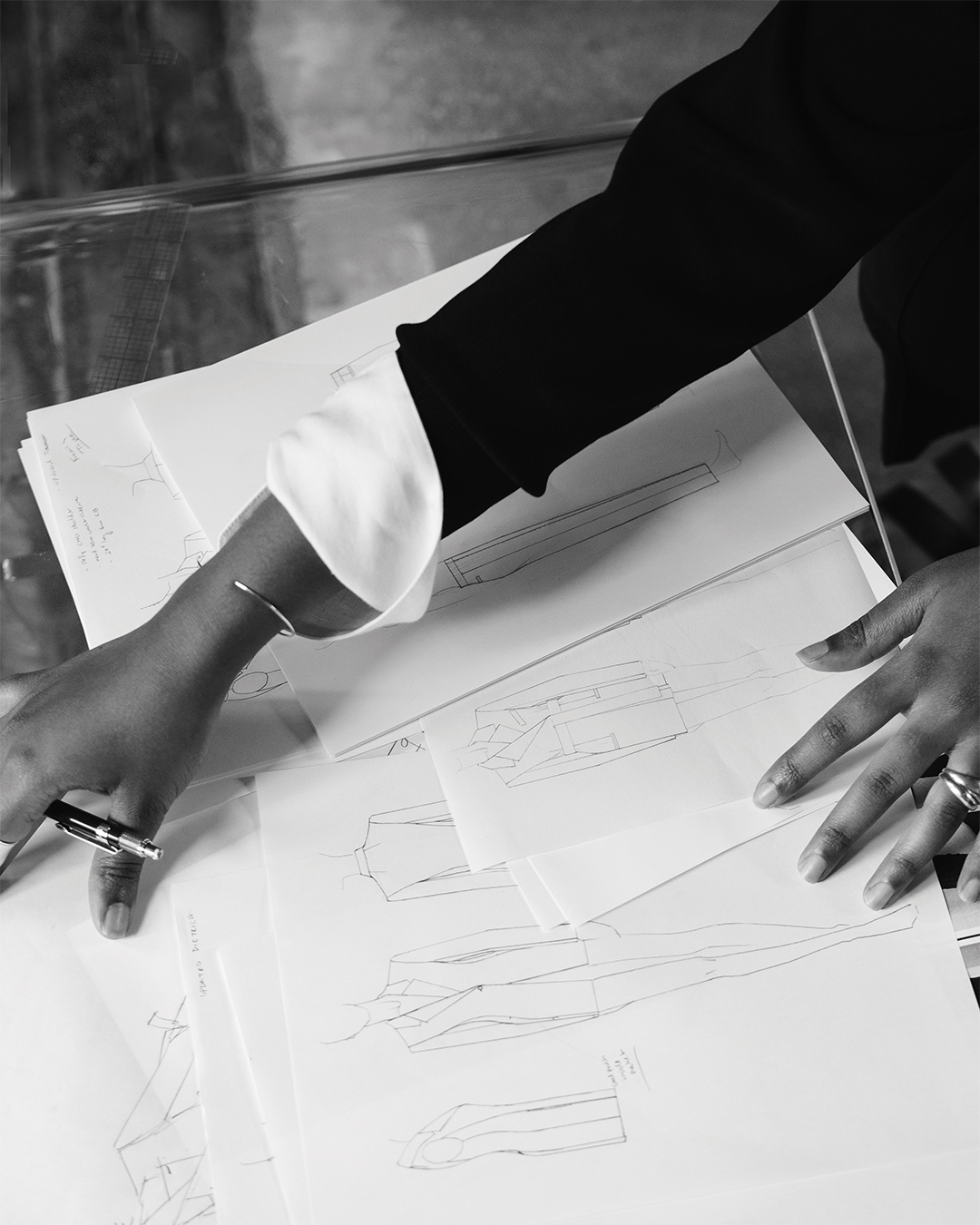
Our design team reviewing Miyako’s sketches.
“...we actually look at our garments on multiple body types during the fitting process. This always comes off as a little bit strange for new people who come in, which I think speaks to our unique emphasis on fit.”
Miyako: “Our fitting process starts with the actual production fit model, so we never fit on a typical runway model like designer brands. What makes us really unique compared to any other brand out there, though, is that we actually look at our garments on multiple body types during the fitting process. This always comes off as a little bit strange for new people who come in, which I think speaks to our unique emphasis on fit. I cannot stress enough how helpful it is to see garments on different body shapes that are the same numerical size, because they fit so differently depending on a person’s shape. This is especially true of women’s clothing and bodies. Our aim is to make sure that our fits are not specific to just one shape.”
Shelby: “Well said, Miyako. I don’t have much to add here other than to emphasize how unique it is that we do this. We’ll get size runs of fit samples, rather than just the industry-standard sample size (size 4). That is not the norm!”
“I’m always looking at how our fabric can be used in unexpected ways, and as a team, we’re always looking for fabrics that do something beyond being just pretty.”
Miyako: “I think OrigamiTech is a great example of how we use fabric in innovative and unconventional ways, because outside of M.M., it’s really only used in men’s tech suiting and athleisure brands. Also, jardigans. My inspiration there actually came from those trendy ‘bandage dresses’ back in the day. I’m always looking at how our fabric can be used in unexpected ways, and as a team, we’re always looking for fabrics that do something beyond being just pretty. Functionality is a key component of our fabric selection.”
Shelby: “There’s also an ongoing synthetic fabric versus natural fiber debate, because synthetic fabrics have better recovery and durability, while natural fibers are very breathable. There are always trade-offs, and we strive to strike the right balance.”

Miyako inspecting a sample style.
“A lot of times, a feature doesn’t end up working with the fabric or design, but we have to try in order to come up with the really ingenious ones we’ve come to be known for.”
Shelby: “We look for every opportunity to make customers’ lives easier, whether that means adding an adjustable hem, pockets, or lingerie snaps to hold your bra straps in place. Other times, we’re coming up with a roundabout solution for something we don’t have the capacity to create. For instance, when we started to add more hem allowance to pants for our taller customers, it was because we couldn’t create an entire tall line. Other times, features come out of moments in fittings and when we’re like, ‘Wouldn’t it be cool if…?’ We’ll just start talking and playing around with things. A lot of times, a feature doesn’t end up working with the fabric or design, but we have to try in order to come up with the really ingenious ones we’ve come to be known for.”
Miyako: “Yeah, sometimes features can become too gimmicky, too. Our goal is to strike a balance in order to create garments that are simultaneously practical and refined.”
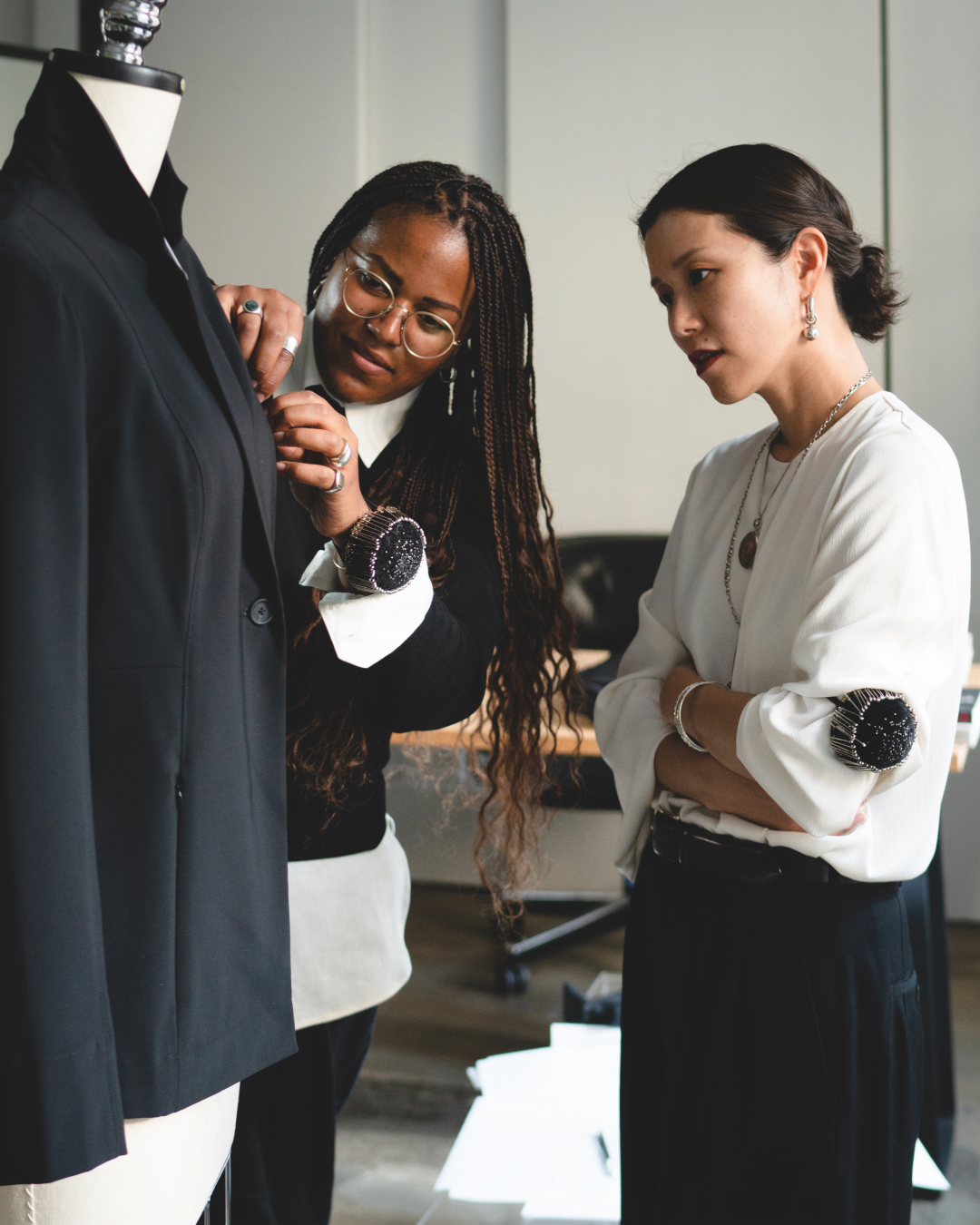
Putting the final touches on our now-best-selling Moreland jacket.
“The Milo is one of those styles where we really succeeded in pushing our customer outside of her comfort zone.”
Miyako: “As of the past year or so, I’d probably say the Milo jean. I’d also say all of our Better Than Denim or OrigamiTech styles have come to epitomize and embody the M.M. ethos. Both fabric groups are so innovative, and what’s really unique is how we’re combining those high-performing fabrics with chic, refined silhouettes.”
Shelby: “That is such a good question—and so difficult—but I’d agree with the Milo. We loved those pants when we made them, but we didn’t think they’d be super ‘commercial.’ A couple of years later, and now they’re one of our top sellers. The Milo is one of those styles where we really succeeded in pushing our customer outside of her comfort zone. Now, we can’t keep them in stock.”





